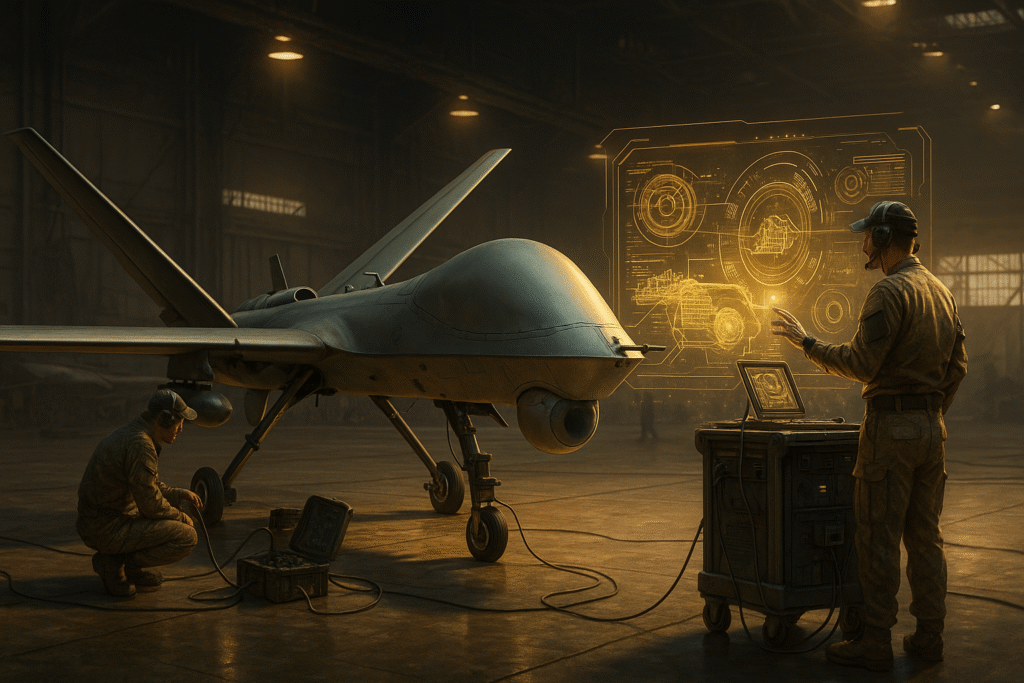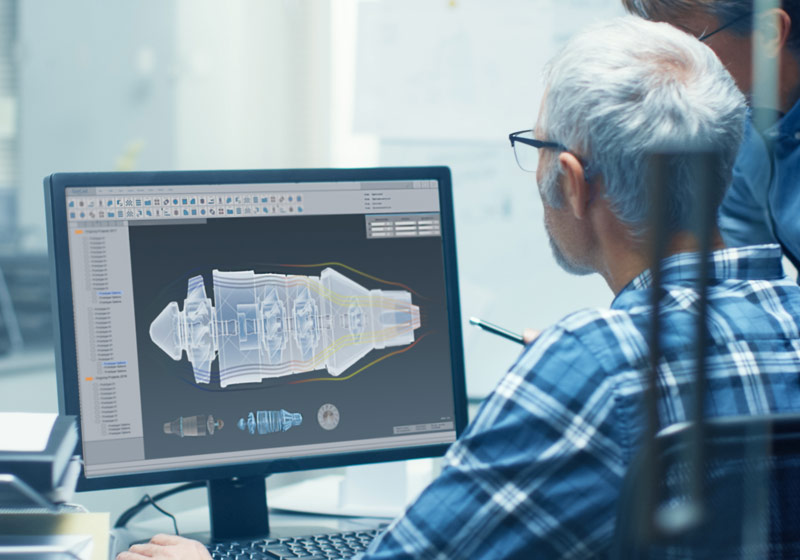Introduction
Unmanned Aerial Vehicles (UAVs) are the backbone of modern defense operations. Yet, 35% of their downtime still stems from unscheduled maintenance, draining both readiness and resources. Traditional, calendar-based maintenance can no longer keep pace with real-time mission demands.
Enter AI-driven predictive maintenance — a transformative approach that uses data, analytics, and machine learning to detect issues before failure occurs. For defense forces, this shift delivers measurable results:
- 45% less downtime
- 30% lower spare-parts inventory costs
- $2.8M annual savings per squadron
The Problem with Traditional UAV Maintenance
Military UAVs operate in environments far more extreme than civilian aircraft. Sandstorms, freezing altitudes, and sustained G-forces accelerate wear far beyond expected cycles. Meanwhile, maintenance teams rely on static schedules, leaving fleets vulnerable to surprise failures.
The cost of a single mission-aborted UAV due to failure averages $150,000, and spare-part overstocking ties up $1.2B in idle resources annually. The system isn’t inefficient — it’s outdated.
How AI Predictive Maintenance Works
From Data to Actionable Intelligence
Every UAV flight produces terabytes of data from:
- Engine performance and vibration sensors
- Avionics and communication systems
- Structural strain gauges
- Environmental readings (temperature, altitude, humidity)
AI algorithms continuously process these data streams, identifying subtle signals that precede component failure — long before human technicians could detect them.
Dynamic Learning Models
Unlike static threshold systems, AI models evolve with every mission. They adjust for variations in altitude, temperature, stress, and mission type, ensuring precise and adaptive forecasts. These models learn how each UAV “behaves,” predicting which part will fail, when, and under what conditions.
Transforming Maintenance Operations
Proactive Scheduling
AI replaces reactive repairs with proactive interventions. Maintenance teams are alerted days or weeks before a fault occurs, allowing servicing during non-mission windows.
Optimized Inventory
AI-based demand forecasting ensures the right part is available exactly when needed. This eliminates both over-stocking and costly last-minute procurement.
Technician Efficiency
Automated diagnostics guide technicians directly to problem areas, cutting repair time and freeing skilled personnel for higher-value tasks.
Netray’s Defense Implementation Framework
- Secure Data Infrastructure
- Edge computing for onboard data processing
- FIPS-compliant encrypted data transfer
- Integration with DoD systems like ALIS and IMDS
- Full ITAR and CMMC Level-3 compliance
- AI Model Training
Netray trains algorithms for defense-specific use cases:
- Propulsion (engine wear, fuel efficiency)
- Avionics (processor degradation, interference)
- Structures (fatigue and stress damage)
- Sensors (navigation and targeting accuracy)
Each model adapts to mission types — ISR, combat, or training — to deliver context-specific accuracy.
- Operational Integration
- Seamless link with existing maintenance workflows
- Automated parts ordering through predictive demand models
- Performance dashboards showing real-time UAV health
- Technician prioritization by failure probability
Key Performance Results
Organizations adopting predictive maintenance typically achieve:
- 15–25% higher mission-capable rates
- 30–40% longer mean time between failures (MTBF)
- 20–30% lower maintenance costs
- Positive ROI within 12–18 months
Fleet analytics also reveal component degradation trends, environmental stress effects, and supply-chain optimization opportunities, enabling strategic planning across entire squadrons.
Overcoming Implementation Challenges
Data Quality in Contested Environments
Limited connectivity in operations?
→ Netray deploys edge AI that analyzes data locally and syncs securely once reconnected.
Algorithm Bias
Continuous retraining across diverse mission profiles ensures balanced, accurate predictions.
Change Management
Through structured rollout phases, technicians are trained to trust and collaborate with AI systems — not replace them.
The Strategic Edge
Predictive maintenance isn’t just about saving money — it’s about mission assurance. AI ensures UAVs are available when needed, missions stay uninterrupted, and defense resources are allocated efficiently.
By embracing predictive maintenance, organizations gain:
- Enhanced readiness in high-tempo operations
- Lower lifecycle costs
- Improved safety and operational confidence
- A head start in defense digital transformation
Conclusion: From Reactive to Predictive Readiness
AI-driven predictive maintenance is redefining how militaries sustain their fleets. The transition from scheduled to smart maintenance delivers measurable impact: 45% less downtime, 30% lower costs, and millions in savings.
With Netray’s defense-grade AI framework — combining secure architecture, aerospace expertise, and proven ROI models — the path to predictive readiness is clear.



